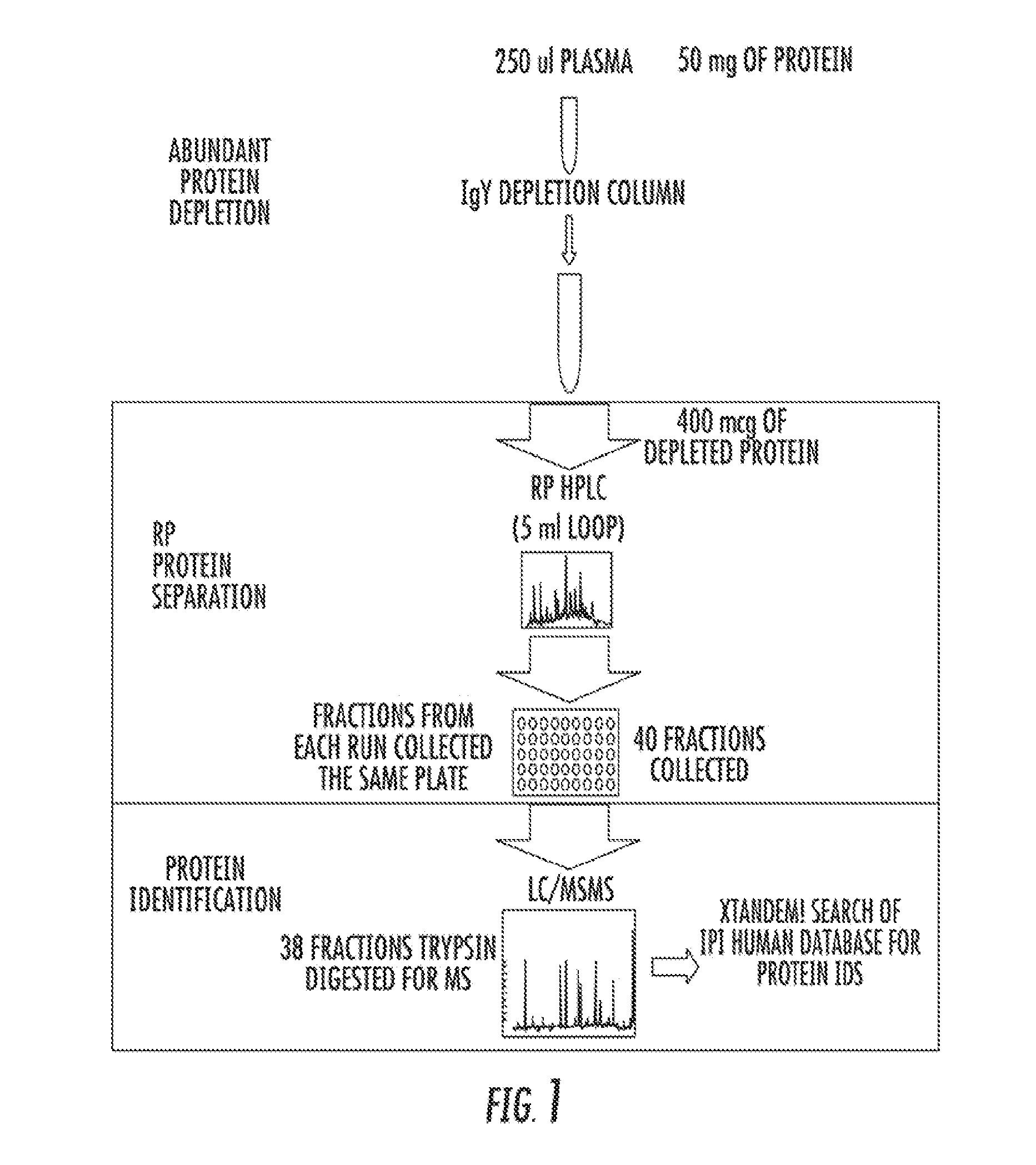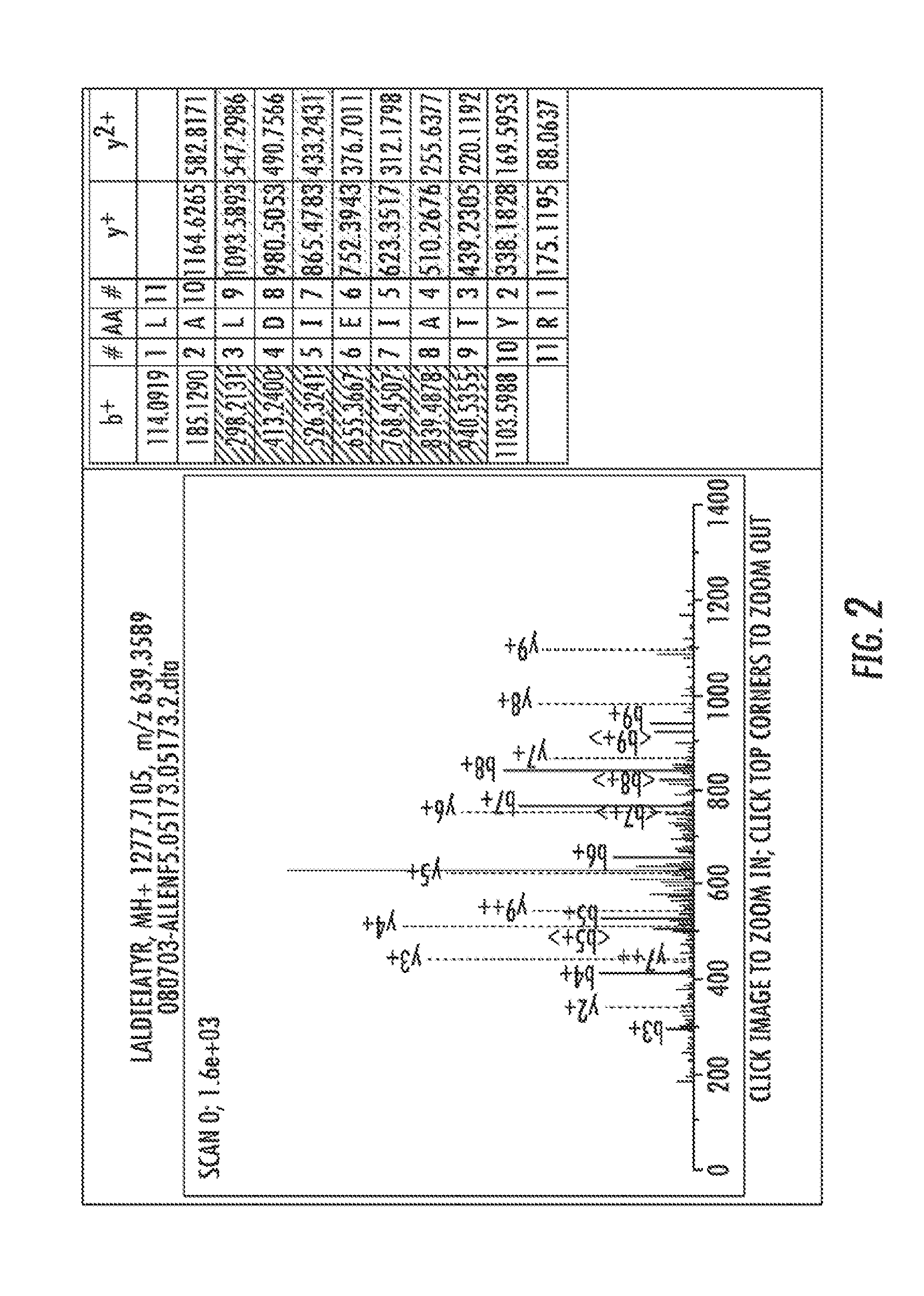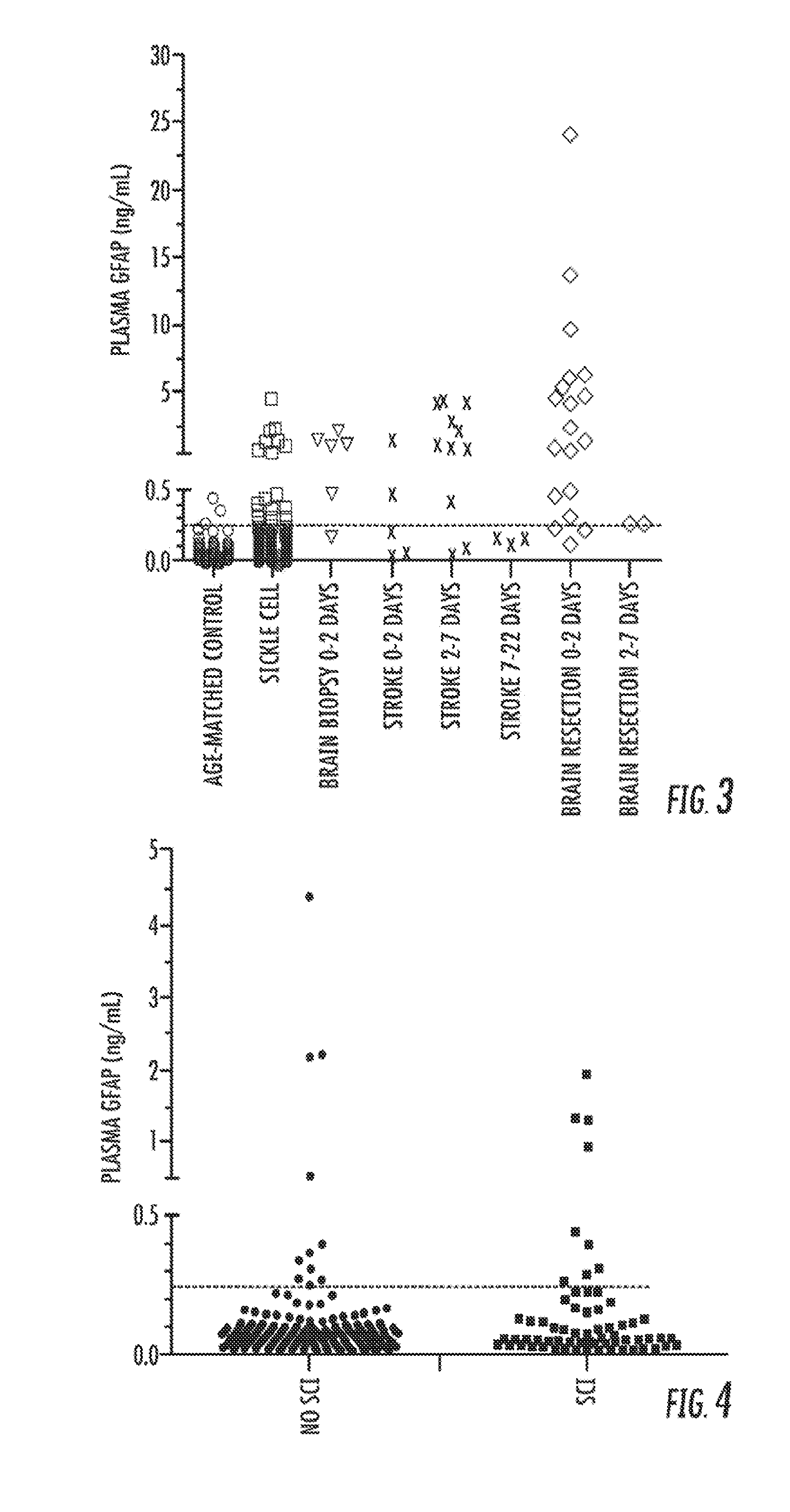Biomarkers of brain injury
a brain injury and biomarker technology, applied in the field of biomarkers, can solve the problems of complex brain injuries, multiple severe clinical outcomes, and difficult detection of subclinical brain injuries, and achieve the effects of stabilizing or preventing new or recurrent cns injuries, improving diagnostic accuracy of cns injuries, and improving outcomes
- Summary
- Abstract
- Description
- Claims
- Application Information
AI Technical Summary
Benefits of technology
Problems solved by technology
Method used
Image
Examples
example 1
Discovery of Circulation Biomarkers of Subclinical Brain Injury (SCI) in Children with Sickle Cell Disease (SCD)
[0121]Children with SCD and SCI have significant learning defects and are at increased risk for stroke. Early detection of SCI would allow institution of therapies to prevent further brain injury and neurocognitive defects, including loss of I.Q. By definition, SCI patients have MRI and pathologic evidence of brain injury consistent with microinfarction. Therefore, it is likely that unique circulating biomarkers exist to identify patients with SCI as has been shown in non-SCD patients with overt stroke. The present goal of is to use non-biased proteomic techniques to explore clinically paired groups of SCI and non-SCI patient plasma samples to identify lead proteins for validation as circulating biomarkers of SCI.
[0122]Study Population.
[0123]The study population comprised male and female children 6-12 years old with SCD participating in the SIT Trial (24 institutions) havi...
example 2
Discovery of Circulation Biomarkers of Subclinical Brain Injury (SCI) in Children with Sickle Cell Disease (SCD)
[0130]Children with SCD and SCI have significant learning defects and are at increased risk for stroke. Early detection of SCI would allow institution of therapies to prevent further brain injury and neurocognitive defects, including loss of I.Q. By definition, SCI patients have MRI and pathologic evidence of brain injury consistent with microinfarction. Therefore, it is likely that unique circulating biomarkers exist to identify patients with SCI as has been shown in non-SCD patients with overt stroke. The present goal of is to use non-biased proteomic techniques to explore clinically paired groups of SCI and non-SCI patient plasma samples to identify lead proteins for validation as circulating biomarkers of SCI.
[0131]Study Population.
[0132]The study population comprised male and female children 6-12 years old with SCD participating in the SIT Trial (24 institutions) havi...
example 3
Biomarker Panel for Diagnosis of Subclinical Brain Injury
[0140]Further analysis of the data described herein, as well as data from a cohort of adults having heart surgery, resulted in the following panel of biomarkers that can be used individually, or in combination to diagnose / assess subclinical brain injury.
TABLE 3Biomarker Panel for Subclinical Brain InjuryProtein SymbolProtein NameASTN1Astrotactin1BAI3Brain angiogenesis inhibitor 3CNDP1Carnosine dipeptidase 1ERMINERMINGFAPGlial fibrillary acidic proteinGRM3Glutamate receptor, metabotropic 3KLH32Kelch-like protein 32MAGE2Melanoma antigen family E, 2NRG3Neuregulin 3NRGNNeurograninOMGOligodendrocyte myelin glycoproteinSLC39A12Solute carrier family 39 (zinc transporter), member 12RTNReticulon 1MT3Metallothionein 3
PUM
| Property | Measurement | Unit |
|---|---|---|
| time | aaaaa | aaaaa |
| concentration | aaaaa | aaaaa |
| concentration | aaaaa | aaaaa |
Abstract
Description
Claims
Application Information
 Login to View More
Login to View More - R&D
- Intellectual Property
- Life Sciences
- Materials
- Tech Scout
- Unparalleled Data Quality
- Higher Quality Content
- 60% Fewer Hallucinations
Browse by: Latest US Patents, China's latest patents, Technical Efficacy Thesaurus, Application Domain, Technology Topic, Popular Technical Reports.
© 2025 PatSnap. All rights reserved.Legal|Privacy policy|Modern Slavery Act Transparency Statement|Sitemap|About US| Contact US: help@patsnap.com



